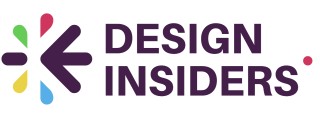
The Basics of User Segmentation
Grasping the Essence of User Segmentation
Understanding user segmentation is key to crafting effective design strategies for product teams. At its core, user segmentation involves dividing a broad customer base into distinct groups based on shared characteristics. This approach enables teams to tailor their strategies, ensuring that they adequately cater to the diverse needs of their users.
There are several types of segmentation that can be employed to achieve this, each with its unique focus:
- Demographic Segmentation: This approach classifies users based on observable traits such as age, gender, and income. It offers a straightforward method to segment users and develop targeted strategies.
- Behavioral Segmentation: Analyzing how users interact with a product, including frequency and type of product usage, can reveal valuable insights. Power users, for example, may form a distinct segment based on their extensive use and engagement.
- Psychographic Segmentation: Understanding users’ lifestyles, values, and interests can help design teams create user experiences that resonate emotionally with their audience.
- Firmographic Segmentation: For B2B product teams, segmenting users based on company size, industry, or revenue is crucial in tailoring the product offering effectively.
Implementing a consistent segmentation strategy helps identify key user segments, allowing product teams to align their offerings with the unique demands of each group. This awareness is essential for any successful UX strategist who seeks to enhance user experience through thoughtful segmentation.
Successfully defining and understanding these segments allows teams to delve deeper into users’ behaviors, preferences, and needs, which ultimately enhances their ability to effectively engage and cater to customers.
Identifying Key User Groups
Recognizing the Diversity Among Users
Identifying key user groups is a pivotal step in user segmentation. By understanding the diversity among users, product teams can tailor their strategies to meet the specific needs of each segment. This involves analyzing customer data to identify patterns and behaviors that distinguish different types of users. For instance, power users, who engage frequently with a product, might require different features compared to casual users.
Types of User Segmentation
To effectively segment users, it’s crucial to consider various types of segmentation strategies:
- Behavioral Segmentation: This involves grouping users based on their interactions with the product, such as frequency of use or feature preference.
- Firmographic Segmentation: Particularly useful in B2B contexts, this approach categorizes users based on organizational characteristics like industry or company size.
- Psychographic Segmentation: This method focuses on users’ lifestyles, values, and interests, offering deeper insights into user behavior.
Utilizing Data for Effective Segmentation
Data is at the heart of user segmentation. By leveraging product analytics, teams can create user segments that reflect real-world usage patterns. This data-driven approach helps in forming a robust segmentation strategy that aligns with the overall marketing and product goals.
For more insights on how thoughtful design can enhance user experience, consider exploring enhancing your experience through thoughtful design.
Tools and Techniques for Effective Segmentation
Exploring Tools and Techniques for Precise Division
The success of a segmentation strategy hinges on the selection and application of effective tools and techniques. This process essentially involves harnessing customer data to delineate distinct user segments, and it goes beyond the mere division of your audience based on age or geography.Data Collection and Analysis
The foundation of successful user segmentation is comprehensive data collection, allowing for a nuanced understanding of user behavior and preferences. Product analytics play a crucial role in this endeavor, enabling teams to track product usage effectively and identify various segments users fit into. Employ tools like Google Analytics or Mixpanel to gather the needed data efficiently.
Behavioral Assessment
Behavioral segmentation has gained prevalence as it offers insights based on actions rather than demographics. Utilize user behavior tracking to understand how users interact with your product. Identify patterns such as frequency of use and feature engagement. Such data can help create user strategies that cater to different types user segments. An example of behavioral analysis could include classifying power users, who frequently engage with your product, as a distinct group.
Formulating Segments Based on Shared Characteristics
Psychographic and firmographic segmentation are other strategies that can enhance understanding of your customer base. Psychographic segmentation delves into users' attitudes, values, and lifestyles, while firmographic segmentation focuses on business demographics if you are dealing with B2B markets. Combining these with behavioral insights can provide a holistic view of your user groups, aiding in the creation of highly targeted strategies.
CRM Systems
A Customer Relationship Management (CRM) system can help segment users based on customer data, enabling the creation of personalized marketing strategies. Advanced CRM tools offer automated processes for segment users and can help marketing teams fine-tune their approaches by delivering custom experiences.
Challenges in User Segmentation
Overcoming Obstacles in User Segmentation
While user segmentation is a powerful tool for tailoring design strategies, it comes with its own set of challenges. Understanding these hurdles can help design teams develop more effective segmentation strategies and create user experiences that resonate with diverse customer groups.
One of the primary challenges is the collection and analysis of customer data. Gathering sufficient data to accurately segment users based on behavioral, psychographic, or firmographic criteria requires robust data collection mechanisms. Product teams often rely on product analytics to understand user behavior, but ensuring data accuracy and relevance can be complex. Misinterpretation of data can lead to ineffective segmentation, which may not reflect the actual needs and preferences of users.
Another challenge is the dynamic nature of user segments. User preferences and behaviors are not static; they evolve over time. This requires continuous monitoring and updating of user segments to keep up with changing trends and customer expectations. Failing to do so can result in outdated segments that no longer align with the current user base.
Additionally, integrating segmentation into the design workflow can be difficult. Design teams must ensure that user segmentation is seamlessly incorporated into their processes without disrupting existing workflows. This requires collaboration across teams and a clear understanding of how segmentation data can inform design decisions.
Lastly, there is the challenge of balancing segmentation granularity. While detailed segmentation can provide deep insights, it can also lead to overly complex strategies that are difficult to implement. Finding the right level of granularity that provides actionable insights without overwhelming the team is crucial for effective segmentation.
Despite these challenges, when executed correctly, user segmentation can significantly enhance the design process, helping teams create products that truly meet the needs of their users.
Integrating User Segmentation into Design Workflow
Streamlining User Segmentation into the Design Process
Integrating user segmentation into the design workflow can revolutionize the way product teams approach the development of a product. By understanding the distinct user groups, teams can tailor their designs to meet the specific needs and preferences of each segment, thus enhancing user satisfaction and engagement. To effectively integrate user segmentation into your design process, consider the following key steps:- Cross-Functional Collaboration: Engage various departments such as marketing, product development, and customer service to gather comprehensive customer data. This collaboration ensures a holistic view of user behavior and preferences.
- Shared Understanding of Segments: Create a common language and understanding around user segments among team members. This includes defining clear segments based on firmographic, psychographic, or behavioral segmentation.
- Data-Driven Strategy: Utilize product analytics to comprehend user behavior and identify trends and patterns. This data-backed approach aids in refining segments and revealing insights into user needs.
- Agile Design Practices: Incorporate segmentation insights into iterative design cycles. By continuously testing and refining designs based on real user feedback from specific segments, product teams can adapt quickly to evolving user expectations.
- Goal Alignment: Ensure alignment between segmentation strategy and overall product goals. Each user segment should have tailored objectives that align with business outcomes.














